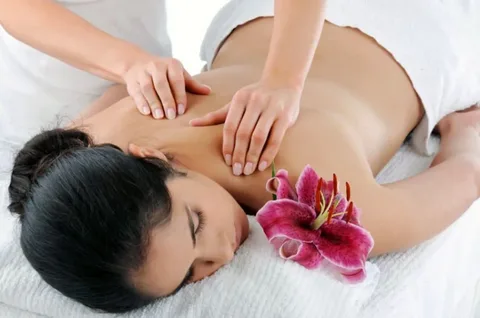Lingam massage, a practice with ancient roots, focuses on stimulating and relaxing the male genitalia, known as the lingam. This article delves into the origins, techniques, and benefits of this massage, sharing the comparison with traditional massage, and providing insights into its cultural significance and practical applications.
Origins and Cultural Significance
This lingam massage originates from ancient Indian and Taoist traditions, where it is part of spiritual practices aimed at harmonizing body, mind, and spirit. The term “lingam” is derived from Sanskrit, meaning “symbol” or “pillar,” and is often associated with divine masculine energy.
Key Points of lingam massage
1: Cultural Roots: Ancient Indian and Taoist traditions.
2: Spiritual Context: Part of tantric practices and holistic healing.
3: Symbolism: Represents divine masculine energy and spiritual awakening.
Techniques and Practices
Preparation
1: Create a Comfortable Environment: Ensure the setting is calm, private, and free from distractions.
2: Enhance the Ambiance: Use calming music, soft lighting, and aromatic essential oils.
3: Relaxed State: Both the giver and receiver should be in a relaxed state.
4: Clear Communication: Discuss and establish boundaries and comfort levels before starting.
The Process
1: Gentle Touch: Begin with gentle and slow strokes to relax the recipient. Use the whole hand or fingers to caress and warm up the area, ensuring a soothing touch..
2: Lubrication: Apply a generous amount of high-quality, natural lubricant to reduce friction and enhance comfort. This can be oil, lotion, or a specific massage gel.
3: Exploration: Use varied techniques, including stroking, massaging, and circular movements. Focus on the different areas of the lingam, including the shaft, head, and base. Pay attention to the recipient’s feedback to adjust pressure and speed.
4: Breath and Energy: Incorporate breathing techniques to align with the recipient’s rhythm. Deep breathing helps in relaxing and enhancing the energy flow throughout the massage.
5: Completion: Gradually reduce the intensity of the strokes and bring the session to a gentle close. Allow time for the recipient to rest and absorb the experience.
Aftercare
1: Rest and Hydrate: Provide a comfortable space for relaxation and hydration.
2: Discuss Experience: Talk about the experience if appropriate to address any feelings.
Benefits of Lingam Massage
Physical Benefits
1: Enhanced Relaxation: This massage promotes relaxation by reducing muscle tension and stimulating the parasympathetic nervous system. This can lead to an overall sense of well-being and calm.
2: Improved Circulation: The gentle strokes and pressure applied during the massage can improve blood flow to the genital area, potentially enhancing sexual function and health.
2: Increased Sensitivity: Regular practice of this massage can increase sensitivity and awareness of the genital area, contributing to a more fulfilling sexual experience.
Emotional and Psychological Benefits
1: Stress Relief: The deep relaxation achieved through this massage can help alleviate stress and anxiety. This contributes to better mental health and emotional balance.
2: Enhanced Intimacy: For couples, this massage can deepen intimacy and strengthen emotional connections. It provides an opportunity for open communication and mutual understanding.
3: Exploration of Sexuality: This massage encourages a positive and explorative approach to sexuality. It allows individuals to explore their desires and preferences in a safe and respectful manner.
Cultural Considerations and Ethical Practice
Respect and Sensitivity: Approach with respect for its cultural and spiritual significance.
Training and Professionalism: Seek training from qualified professionals.
Consent and Communication: Ensure open communication and respect for boundaries.
Lingam Massage vs. Traditional Massage
| Aspect | Lingam Massage | Traditional Massage |
| Focus | Male genitalia, holistic and spiritual integration | General body relaxation and muscle treatment |
| Techniques | Gentle strokes, lubrication, breathing techniques | Various techniques such as kneading, tapping, and friction |
| Purpose | Awakening spiritual energy, enhancing sexual awareness | Reducing muscle tension, improving circulation |
| Cultural Significance | Rooted in tantric and Taoist traditions | Widely practiced across various cultures for relaxation |
| Training Requirements | Specialized training with emphasis on cultural and spiritual aspects | Standard massage training programs |
Let’s summarize it for better comprehension:
| Aspect | Description | Examples | Benefits | Impact |
| Origins | Ancient Indian and Taoist traditions | Tantric practices, spiritual healing | Spiritual awakening, cultural appreciation | Enhanced understanding of holistic practices |
| Techniques | Gentle strokes, lubrication, breathing techniques | Slow, soothing movements, application of natural lubricants | Increased relaxation, improved sensitivity | More holistic and personalized experience |
| Physical Benefits | Enhanced relaxation, improved circulation, increased sensitivity | Reduction in muscle tension, enhanced blood flow | Overall well-being, enhanced sexual health | Improved physical and emotional well-being |
| Emotional Benefits | Stress relief, enhanced intimacy, exploration of sexuality | Reduced anxiety, deeper emotional connections, positive sexual experiences | Better mental health, stronger relationships | Greater emotional balance and fulfillment |
| Cultural Considerations | Respect for cultural and spiritual significance | Proper training, consent, and ethical practice | Ethical practice, cultural sensitivity | Respectful and informed approach to the practice |
Conclusion
Lingam massage is a practice rich in cultural and spiritual significance, offering various physical, emotional, and psychological benefits. By understanding its origins, techniques, and benefits, individuals can approach this practice with greater respect and appreciation. Whether used for personal exploration or enhancing intimacy, this massage provides a pathway to relaxation, connection, and self-discovery.



